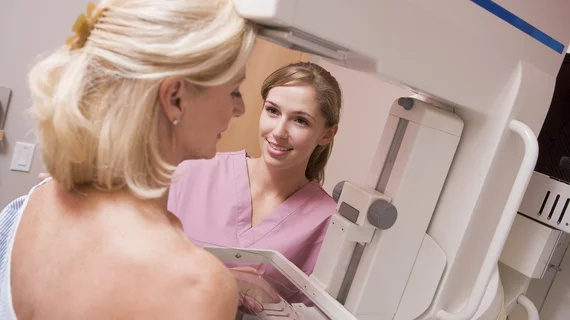'Probably benign' BI-RADS 3 category has high utilization, low cancer yield, study finds
A new JACR study reviewed data from more than 3 million diagnostic mammograms in the National Mammography Database, analyzing outcomes for the 15.5% of cases initially classified as “probably benign” under BI-RADS category 3.
The findings showed that in spite of heavy utilization of the category, overall cancer yield for these cases is low. Among women who underwent adequate follow-up after the initial BI-RADS 3 classification—either through imaging follow-up after at least 24 months or a biopsy—patient-level likelihood of malignancy was just .91%, well under the 2% benchmark for the category.
While a low cancer yield is clearly good news for the patients in question, it also raises questions for the study’s authors about whether benign findings may be overdiagnosed as BI-RADS category 3 cases.
“The substantial BI-RADS 3 rate in diagnostic mammography, although maintaining low cancer yield, highlights an opportunity for future research to redefine imaging criteria and benchmarks for diagnostic BI-RADS 3 use, to minimize unnecessary healthcare costs and patient anxiety,” Mai A. Elezaby, MD, of the University of Wisconsin School of Medicine and Public Health, and co-authors wrote.
Although overall malignancy rates were low, the review did identify several factors associated with higher malignancy rates after an initial BIRADS-3 diagnosis, including age, imaging finding type, and breast tissue density. Women age 70 and older, those whose imaging findings indicated calcification, and women with extremely dense breast tissue all had statistically higher likelihood of malignancy than women in other categories.
“These examination and patient variables should warrant caution when encountered in routine practice before assigning a probably benign assessment, in order to maintain the originally intended low cancer yield of probably benign assessment,” the authors wrote.
Perhaps useful for future conversations about the appropriate use of BI-RADS 3, the study also shed light on different utilization rates of the diagnosis among different types of practices. For example, facilities with relatively higher utilization included those that perform fewer than 5,000 diagnostic mammograms annually, compared with those that perform 5,000 to 10,000 exams annually.
Elezaby et al. noted that lower facility volumes likely result in lower interpretive volumes by radiologists, which may decrease diagnostic confidence.
BIRADS-3 diagnoses were also higher among community practices compared with academic practices, with the authors noting that a likely underlying factor could be a lack of subspecialty training.
“In routine clinical practice, in which the majority of mammograms are interpreted by nonspecialists, these results highlight an opportunity for future research on interventions to reduce variability and improve specificity of diagnostic mammography interpretation,” the authors wrote.
